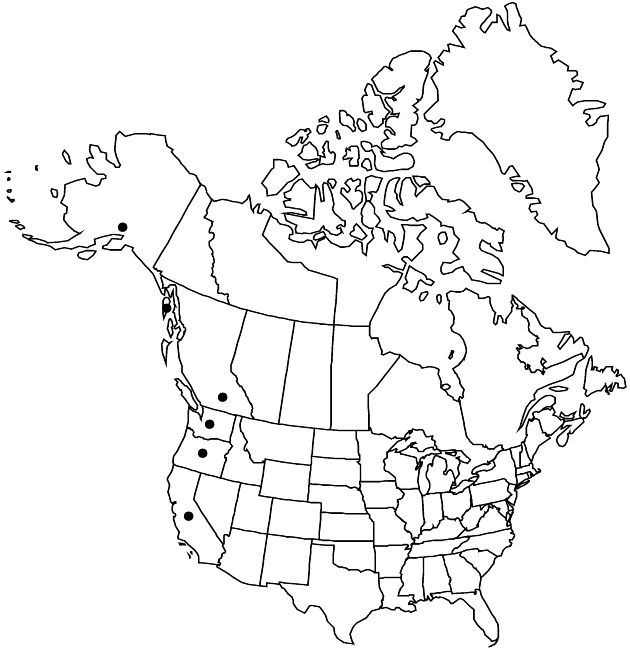Microseris borealis
Jahresber. Pollichia 22–24: 310. 1866.
Perennials, 15–70 cm; rhizomatous, with fleshy adventitious roots. Stems 0. Leaves basal; petiolate; blades mostly oblanceolate, rarely linear, 5–30 cm, margins entire or remotely denticulate, apices acute or acuminate, faces glabrous. Peduncles erect (15–70 cm) ebracteate. Involucres broadly to narrowly ovoid in fruit, 10–18 mm. Phyllaries: (not purple-spotted, apices erect) outer lanceolate to linear-lanceolate, apices acuminate, abaxial faces glabrous or black-villous; inner lanceolate, apices acute, both faces usually lightly black-villous. Florets 18–50; corollas yellow-orange, surpassing phyllaries by 5+ mm. Cypselae columnar or arcuate near bases, 4–8 mm; pappi of 24–48, brownish, barbellate bristles 5–10 mm (bases of bristles sometimes slightly widened). 2n = 18.
Phenology: Flowering Jun-–Sep.
Habitat: Mostly coastal and montane sphagnum bogs, other wet sites from lowlands to alpine in n part of range
Elevation: 0–1800 m
Distribution

B.C., Alaska, Calif., Oreg., Wash.
Discussion
Selected References
None.